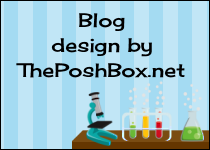Hello friends,
I was so excited to be able to participate in Chapter 4 on Science. I have always enjoyed teaching Science in the classroom with young children. In fact, Science has always been a favorite part of our day in Kindergarten. Before the book study I was unfamiliar with Playful Learning and all of the wonderful resources that they have to offer. The book is full of practical ideas for in depth hands on exploration that is perfect for home learning or extensions and it can be easily adapted to the classroom.
Earlier this summer I was able to take part in the Playful Learning Ecademy and I participated in the Theory+Practice miniCourse. I really took a lot from this course. I did not know what to expect because I had not participated in a course like this before. I thought it was very helpful and informative after reading through the book. I really liked the pace of the course and the interaction with the author. If you are working through this book and working on the learning experiences with children I really encourage you to give one of these courses a try. I do not think you will be disappointed. Before you decide to take a course jot some questions down so that you can ask them in the after share session.
Seeing the natural world through the eyes of a child is an enlightening phenomenon. Their innate appreciation of and fascination for all living things are qualities that can lead to many fulfilling learning experiences. Playful Learning
In chapter 4 Scientific Investigation we start off with a developmental overview just like in all the other chapters. I think this is extremely helpful and serves as a good reference when working through the learning experiences. Young children are natural explorers each day they are exploring to make sense of the world around them. Due to this natural curiosity, scientific exploration is natural to a young child.
As I was reading one of the previous chapters, Playful Learning Spaces, I really connected with Playful Learning Spaces large and small. As I was reading, it made me feel that I could achieve a Playful Learning space with ease.
As a Kindergarten teacher in a school you would think I would not have to worry about space but that is simply not true. Every inch of space is used and planned for. And when I was trying to make a dedicated space for Science Exploration, it seemed overwhelming with everything else to consider. I now realize an actual space of Science can be inviting and it can be...small. So much of our investigation takes place outside so an indoor large space is not necessary. We do however need a dedicated space for our Science tools and notebooks. We can explore, investigate and discover just about anywhere. So, that is why the picture of The Rock Invitation makes sense to me as an educator. Starting off small is a great way to get your feet wet. To me the Invitation is what invites the child to explore and the act of exploring is the engagement. In the picture above you can see that starting off small seems simple. It just makes you feel like anyone can achieve this. Looking at the bigger picture, maybe a few invitations in an area could be possible too. I will admit, I had fun thinking of the materials that would go into my Rock Invitation and it got me thinking of so many more invitations to create. It is these invitations that invite us to explore and be engaged in Science. Before we take a look at the learning experiences for the Scientific Investigation, I will leave you with this video.
Due to the amount of information in this chapter, it has been divided into a few different posts. I can't wait to share more with you!
To see what other teachers are sharing about Scientific Investigation hop on over to Teaching My 3 for more book study fun!

































.JPG)









No comments:
Post a Comment